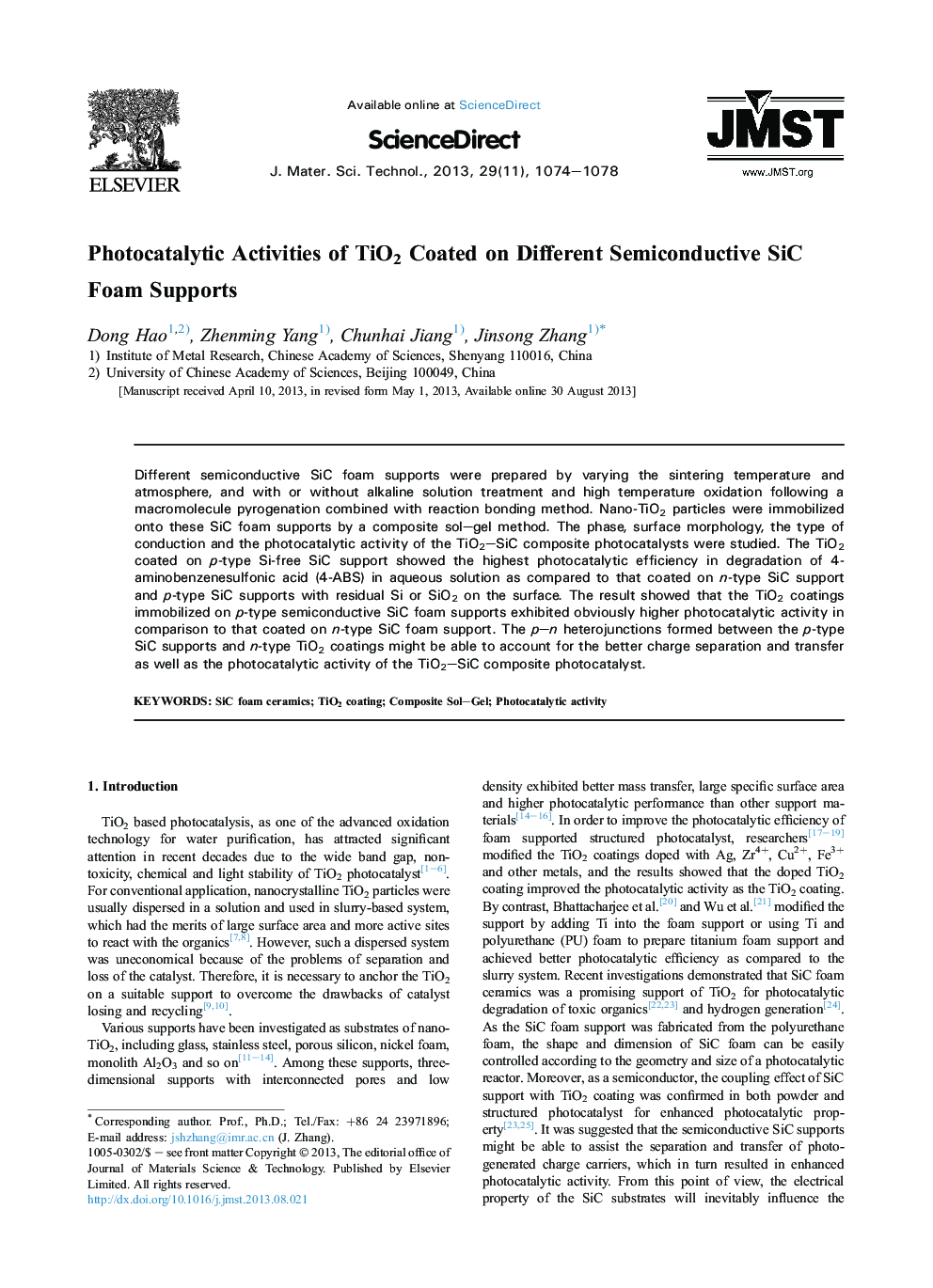| Article ID | Journal | Published Year | Pages | File Type |
|---|---|---|---|---|
| 1556746 | Journal of Materials Science & Technology | 2013 | 5 Pages |
Different semiconductive SiC foam supports were prepared by varying the sintering temperature and atmosphere, and with or without alkaline solution treatment and high temperature oxidation following a macromolecule pyrogenation combined with reaction bonding method. Nano-TiO2 particles were immobilized onto these SiC foam supports by a composite sol–gel method. The phase, surface morphology, the type of conduction and the photocatalytic activity of the TiO2–SiC composite photocatalysts were studied. The TiO2 coated on p-type Si-free SiC support showed the highest photocatalytic efficiency in degradation of 4-aminobenzenesulfonic acid (4-ABS) in aqueous solution as compared to that coated on n-type SiC support and p-type SiC supports with residual Si or SiO2 on the surface. The result showed that the TiO2 coatings immobilized on p-type semiconductive SiC foam supports exhibited obviously higher photocatalytic activity in comparison to that coated on n-type SiC foam support. The p–n heterojunctions formed between the p-type SiC supports and n-type TiO2 coatings might be able to account for the better charge separation and transfer as well as the photocatalytic activity of the TiO2–SiC composite photocatalyst.
